Ensuring the success of your digital ad campaign you need a well-planned approach, without this, your efforts won’t reach your desired impact, leading to missed opportunities and wasted budget. This step by step will help you get a sense of the key considerations in setting up a successful Ads campaign.
Step 1: Set Up Pixels and Tracking
If you want to achieve success with your digital ads and generate revenue, accurate tracking should be your number one goal. Platforms such as Meta, Google, and TikTok all come with features that let you set a tracking pixel that determines how users engage with some actions on your site.
These tracking pixels provide information on user behavior after interaction with ads, for instance, whether they made a purchase or filled in a specific form. This information enables you to measure if your campaign was successful. Then apart from pixels, if your business relies on phone leads or customer management, call tracking and CRM tracking are also necessary. These tools provide you with the knowledge of lead quality and follow their journey in the sales process.
Step 2: Keyword Planning and Audience Targeting
After setting your tracking tools, the next step is to determine the keywords you will use and identify your target audience.
Keyword Planning
The first step is to use Google Keyword Planner and look up keywords that are relevant to your business. This assists in finding out terms that prospective clients are using to search and guarantees that your ads reach appropriate targets.
Target Audience
Targeting helps define how narrow or broad your audience will be. Without any targeting, your ads will have the widest reach, which isn't always a good thing. You could design the perfect ad but without proper targeting, it won’t show to the specific customers who are interested in what you have to offer.
The most common form of targeting includes keywords, demographics, topics and behaviors. Using platforms like Meta and Google, will help develop your audience lists. You can also provide these platforms with a "seed" list of customers who are already interacting with your product, and they will provide you with a lookalike audience; who are potential customers with similar characteristics.
Step 3: Testing Ads and Ad Types
Testing is a major component in the process of optimizing any ad campaign. It helps you determine what does and doesn't work before scaling your efforts.
A/B Testing
This is used to test different versions of your ads to see which performs best. You can test different ad creatives (images or videos), ad types (carousel, video, or static ads), and even different bidding strategies. This is to ensure that your campaign is designed to meet your specific goal. For some campaign types, you can choose an automated bidding strategy, for example, Target Cost Per Acquisition (CPA) or Target Return on Ad Spend (ROAS)
Ad Types
Combine different ad formats such as video, carousel and static images to determine which resonates best with your audience. Ad testing allows you to optimize your campaign and make data-driven marketing decisions.
Step 4: Measuring Success
Once your ads are live, it’s important to track what happens after a customer interacts with your ads. For example, analyzing your return on investment (ROI) will help you make better informed decisions about your ad spend. Other key metrics include, lead quality of the campaign in addition to lead quantity; it won’t benefit your business in the long run if you have a large number of low-quality leads, and view-through conversions, as this measures how many of the users who were shown ads later made a conversion even though the ad was not clicked directly. This metric is useful in determining how the advertisement has impacted user behavior.

Launching a digital advertisement campaign successfully requires quite a number of strategies, the first being a good base. That is why, by using our step-by-step instructions provided here, that we follow ourselves, you will have the tools you need to build a solid base for your campaign to make it effective in driving long term success.






















.png)



.svg)




